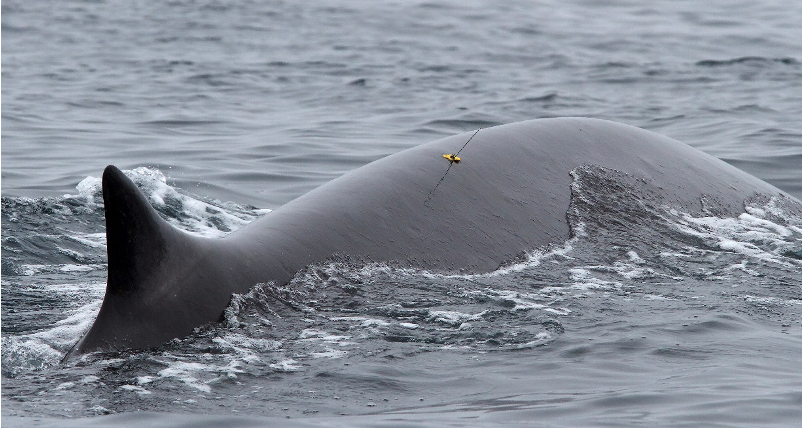
BY MICHELLE KLAMPE/OSU News Service
NEWPORT — Oregon State University researchers have developed a new satellite tag that allows them to better track whales’ behavior, including previously unobservable feeding events during dives.
The tag is a significant advancement in researchers’ ability to observe key whale behavior events, identify important habitat and better understand whales’ response to human activity such as ship traffic or military sonar, said Daniel Palacios, endowed associate professor in whale habitats at OSU’s Marine Mammal Institute in Newport.
For the last 30 years, the institute has been a leader in the development and use of satellite tagging on whales.
As shipping traffic increases, whales across the globe are at increased risk of being struck by large vessels. The upper 100 feet of the ocean is considered the “danger zone” for whales passing through shipping lanes.

“One of the benefits of these new tags is that they give us information about how much time whales are spending within the danger zone throughout their migration,” Palacios said. “With that information, we can identify areas of higher risk and make more informed decisions to help protect them from the threat of ship strikes.”
The ability to monitor dive behavior and detect changes could also have applications for measuring how whales respond to sources of loud sound, such as sonar used by the U.S. Navy, he said.
The tag also could have applications for new areas of research, including marine mammal physiology, behavior, ecology and conservation. The features and benefits of the new tag are described in a paper published recently in the journal Animal Biotelemetry.
“Studying anything, whether it is a plant, animal or even something like our solar system, relies on our ability to observe it,” said paper co-author Ladd Irvine, a senior faculty research assistant with the Marine Mammal Institute.
“Whales spend the vast majority of their lives underwater, where we can’t see them. They can move more than 100 kilometers in a day, so typical methods of observation aren’t reliable for keeping track of where they are going or what they are doing. Tags allow us to ride along with the whales as they go about their lives, similar to a fitness tracker or smartphone app.”
In the past, technological limitations have prevented long-term tracking of whale feeding behavior. When lunge-feeding, a whale will dive deeply and consume a large quantity of prey and water, then filter out the water. Previous satellite tracking devices could monitor their horizontal movements, but not their behavior while diving.
Working in partnership with tag manufacturer Telonics, Oregon State researchers developed the new device to incorporate pressure and accelerometer sensors that will allow them to monitor more of the whales’ movements, including lunge-feeding, via satellite for multiple months.
The new tags, which are implanted in the whales’ blubber, were tested on 14 blue and 14 humpback whales off the coast of Southern California. Data collected from the tests was similar to what a simulation produced, confirming their effectiveness.
Former institute director Bruce Mate is a co-author of the paper. Mate, now retired, pioneered the study of whale movements using satellite tags in the late 1980s. The new tag is a direct result and progression of Mate’s work, Palacios said.
“Before the advent of tagging, we could only get glimpses into the lives of the whales when they surfaced or by following individuals for a few hours at a time,” Irvine said. “It was like trying to watch a theater production in the dark, where someone would flip the lights on for a few seconds every now and then. By tracking whales across weeks, months and even over a year of their lives, we are now able to put together a more complete picture of the lives of whales.”




















